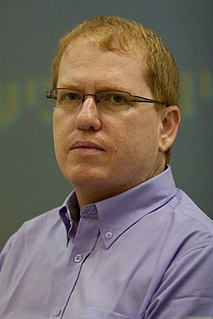 W
WEli Biham is an Israeli cryptographer and cryptanalyst, currently a professor at the Technion - Israel Institute of Technology Computer Science department. Starting from October 2008 and till 2013, Biham was the dean of the Technion Computer Science department, after serving for two years as chief of CS graduate school. Biham received his Ph.D. for inventing (publicly) differential cryptanalysis, while working under Adi Shamir. It had, it turned out, been invented at least twice before. A team at IBM discovered it during their work on DES, and was requested/required to keep their discovery secret by the NSA, who evidently knew about it as well.
 W
WManuel Blum is a Venezuelan-American computer scientist who received the Turing Award in 1995 "In recognition of his contributions to the foundations of computational complexity theory and its application to cryptography and program checking".
 W
WGilles Brassard, is a faculty member of the Université de Montréal, where he has been a Full Professor since 1988 and Canada Research Chair since 2001.
 W
WDavid Chaum is an American computer scientist and cryptographer. He is known as a pioneer in cryptography and privacy-preserving technologies, and widely recognized as the inventor of digital cash. His 1982 dissertation "Computer Systems Established, Maintained, and Trusted by Mutually Suspicious Groups" is the first known proposal for a blockchain protocol. Complete with the code to implement the protocol, Chaum's dissertation proposed all but one element of the blockchain later detailed in the Bitcoin whitepaper.
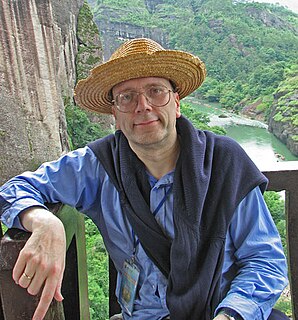 W
WDr. Yvo G. Desmedt is the Jonsson Distinguished Professor at the University of Texas at Dallas, and in addition Chair of Information Communication Technology at University College London. He was a pioneer of threshold cryptography and is an International Association for Cryptologic Research Fellow. He also made crucial observations that were used in the cryptanalysis of the Merkle–Hellman knapsack cryptosystem and observed properties of the Data Encryption Standard which were used by Eli Biham and Adi Shamir when they invented Differential Cryptanalysis.
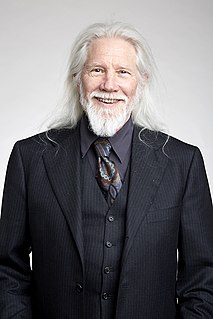 W
WBailey Whitfield 'Whit' Diffie, ForMemRS, is an American cryptographer and one of the pioneers of public-key cryptography along with Martin Hellman and Ralph Merkle. Diffie and Hellman's 1976 paper New Directions in Cryptography introduced a radically new method of distributing cryptographic keys, that helped solve key distribution—a fundamental problem in cryptography. Their technique became known as Diffie–Hellman key exchange. The article stimulated the almost immediate public development of a new class of encryption algorithms, the asymmetric key algorithms.
 W
WOded Goldreich is a professor of Computer Science at the Faculty of Mathematics and Computer Science of Weizmann Institute of Science, Israel. His research interests lie within the theory of computation and are, specifically, the interplay of randomness and computation, the foundations of cryptography, and computational complexity theory. He won the Knuth Prize in 2017.
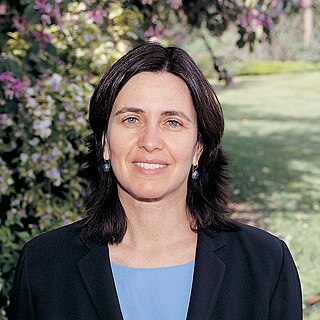 W
WShafrira Goldwasser is an Israeli-American computer scientist and winner of the Turing Award in 2012. She is the RSA Professor of Electrical Engineering and Computer Science at MIT, a professor of mathematical sciences at the Weizmann Institute of Science, Israel, co-founder and chief scientist of Duality Technologies and the director of the Simons Institute for the Theory of Computing in Berkeley, CA.
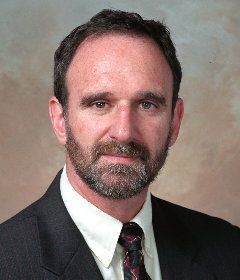 W
WMartin Edward Hellman is an American cryptologist, best known for his invention of public key cryptography in cooperation with Whitfield Diffie and Ralph Merkle. Hellman is a longtime contributor to the computer privacy debate, and has applied risk analysis to a potential failure of nuclear deterrence.
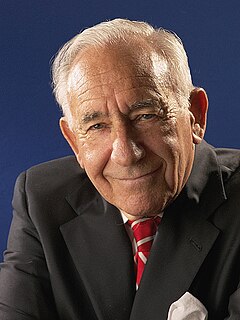 W
WDavid Kahn is an American historian, journalist, and writer. He has written extensively on the history of cryptography and military intelligence.
 W
WArjen Klaas Lenstra is a Dutch mathematician, cryptographer and computational number theorist. He is currently a professor at the École Polytechnique Fédérale de Lausanne (EPFL) where he heads of the Laboratory for Cryptologic Algorithms.
 W
WJames Lee Massey was an information theorist and cryptographer, Professor Emeritus of Digital Technology at ETH Zurich. His notable work includes the application of the Berlekamp–Massey algorithm to linear codes, the design of the block ciphers IDEA and SAFER, and the Massey-Omura cryptosystem.
 W
WRalph C. Merkle is a computer scientist. He is one of the inventors of public-key cryptography, the inventor of cryptographic hashing, and more recently a researcher and speaker on cryonics.
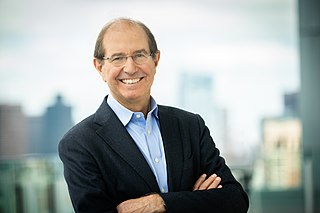 W
WSilvio Micali is an Italian computer scientist, professor at the Massachusetts Institute of Technology and the founder of Algorand. Micali's research centers on cryptography and information security.
 W
WMoni Naor is an Israeli computer scientist, currently a professor at the Weizmann Institute of Science. Naor received his Ph.D. in 1989 at the University of California, Berkeley. His advisor was Manuel Blum.
 W
WAndrew Michael Odlyzko is a Polish-American mathematician and a former head of the University of Minnesota's Digital Technology Center and of the Minnesota Supercomputing Institute. He began his career in 1975 at Bell Telephone Laboratories, where he stayed for 26 years before joining the University of Minnesota in 2001.
 W
WJean-Jacques Quisquater is a cryptographer and a professor at University of Louvain (UCLouvain). He received, with Claus P. Schnorr, the RSA Award for Excellence in Mathematics in 2013, and the ESORICS Outstanding Research Award 2013.
 W
WMichael Oser Rabin is an Israeli mathematician and computer scientist and a recipient of the Turing Award.
 W
WRonald Linn Rivest is a cryptographer and an Institute Professor at MIT. He is a member of MIT's Department of Electrical Engineering and Computer Science (EECS) and a member of MIT's Computer Science and Artificial Intelligence Laboratory (CSAIL). His work has spanned the fields of algorithms and combinatorics, cryptography, machine learning, and election integrity.
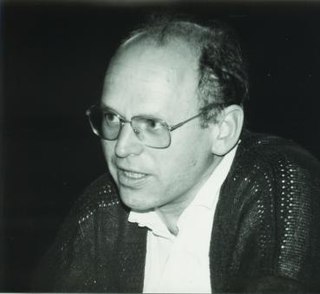 W
WClaus-Peter Schnorr is a German mathematician and cryptographer.
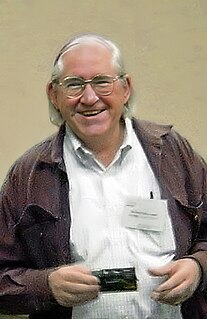 W
WRichard C. Schroeppel is an American mathematician born in Illinois. His research has included magic squares, elliptic curves, and cryptography. In 1964, Schroeppel won first place in the United States among over 225,000 high school students in the Annual High School Mathematics Examination, a contest sponsored by the Mathematical Association of America and the Society of Actuaries. In both 1966 and 1967, Schroeppel scored among the top 5 in the U.S. in the William Lowell Putnam Mathematical Competition. In 1973 he discovered that there are 275,305,224 normal magic squares of order 5. In 1998–1999 he designed the Hasty Pudding Cipher which was a candidate for the Advanced Encryption Standard, and he is one of the designers of the SANDstorm hash, a submission to the NIST SHA-3 competition.
 W
WAdi Shamir is an Israeli cryptographer. He is a co-inventor of the Rivest–Shamir–Adleman (RSA) algorithm, a co-inventor of the Feige–Fiat–Shamir identification scheme, one of the inventors of differential cryptanalysis and has made numerous contributions to the fields of cryptography and computer science.
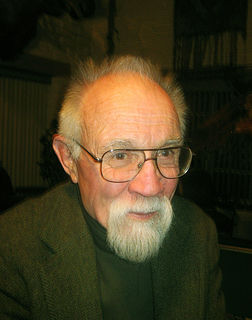 W
WGustavus J. Simmons is a retired cryptographer and former manager of the applied mathematics Department and Senior Fellow at Sandia National Laboratories. He worked primarily with authentication theory, developing cryptographic techniques for solving problems of mutual distrust and in devising protocols whose function could be trusted, even though some of the inputs or participants cannot be. Simmons was born in West Virginia and was named after his grandfather, a prohibition officer who was gunned down three years before Gustavus was born. He began his post-secondary education at Deep Springs College, and received his Ph.D in mathematics from the University of New Mexico, Albuquerque.
 W
WJacques Stern is a cryptographer, currently a professor at the École Normale Supérieure. He received the 2006 CNRS Gold medal. His notable work includes the cryptanalysis of numerous encryption and signature schemes, the design of the Pointcheval–Stern signature algorithm, the Naccache–Stern cryptosystem and Naccache–Stern knapsack cryptosystem, and the block ciphers CS-Cipher, DFC, and xmx. He also contributed to the cryptanalysis of the SFLASH signature scheme.
 W
WAndrew Chi-Chih Yao is a Chinese computer scientist and computational theorist. He is currently a Professor and the Dean of Institute for Interdisciplinary Information Sciences (IIIS) at Tsinghua University. Yao used the minimax theorem to prove what is now known as Yao's Principle.